Achieving the perfect balance of tanginess and sweetness in sourdough bread can be challenging. What’s the secret to crafting a delightfully sweet sourdough that will impress your loved ones? Discover what sets this recipe apart. Get ready to create an irresistibly soft and satisfying sweet sourdough bread!
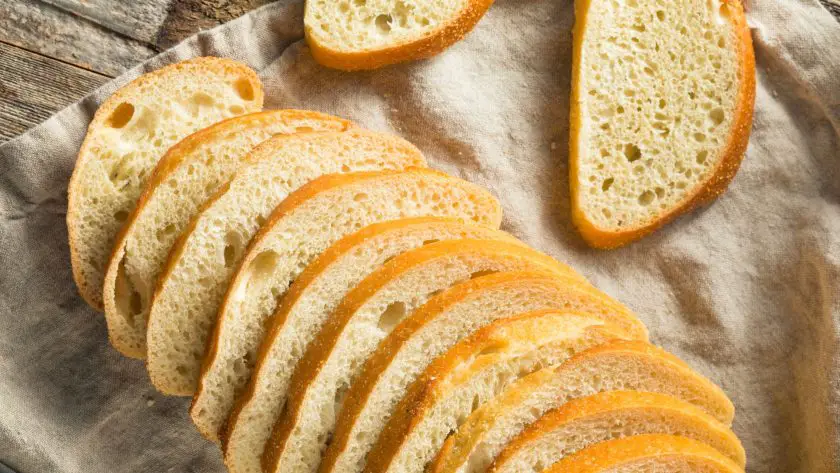
Table of Contents
- Using a Sweet Starter
- Ingredients
- How to Make Sweet Sourdough Bread
- Common Problems + Troubleshooting
- Customizing Your Sweet Sourdough
- Pairing and Serving Ideas
- Sourdough Sweetness!
- Sweet Sourdough Bread: FAQs
Using a Sweet Starter
In sweet sourdough bread, the key to success lies in adapting your starter to complement the sweeter flavor profile. By incorporating sugar or other sweeteners into your starter, you can encourage the growth of yeast strains that thrive in a sugary environment, ultimately enhancing the flavor and texture of your final loaf.
Adapting Your Sourdough Starter for Sweet Breads
To create a sweet starter, feed your existing sourdough starter with flour, water, and your chosen sweetener. The type of sugar you use can impact the fermentation process and the final flavor of your bread.
Some options to consider include:
- White sugar: A classic choice that provides a clean, sweet taste without overpowering the sourdough flavor.
- Brown sugar: Adds a subtle molasses note and can contribute to a slightly darker color in your bread.
- Honey: Imparts a distinct floral aroma and can help to keep your bread moist and tender.
When feeding your starter, aim for a ratio of about 1 part sweetener to 10 parts flour. This will provide enough sugar to support the yeast without overwhelming the natural sourdough tang.
The Impact of Sweeteners on Fermentation
As you feed your starter with sugar, you may notice a change in its behavior. The added sweetness can cause the yeast to become more active, leading to a faster rise and more vigorous bubbling. The yeast feeds on simple sugars, converting them into carbon dioxide and alcohol.
However, it’s important not to overdo it with sugar. Too much sweetness can inhibit the growth of the beneficial bacteria that give sourdough its characteristic tang and complex flavor.
Aim for a balanced approach, gradually increasing the amount of sugar in your starter until you achieve the desired level of sweetness in your final bread.
Ingredients
- 500 grams of bread flour
- 50 grams of whole wheat flour
- 150 grams active sourdough starter
- 300-350 grams of water (adjust based on flour absorption)
- 10 grams salt
- Sweetener of choice:
- Sugar: 20-30 grams
- Honey: 30-50 grams
- Maple syrup: 30-40 grams
- Optional add-ins:
- Dried fruits (raisins, cranberries, apricots, or figs): 100-150 grams, chopped
- Fresh fruits (grated apple, mashed banana, or pureed pumpkin): 100-200 grams of fruit puree
Note that the amount of water needed may vary depending on the type of flour you use and the humidity in your environment. Start with the lower end of the range and add more water as needed to achieve a soft, tacky dough.
Also, if you choose to include fresh or dried fruits, you may need to slightly reduce the amount of water in the recipe to account for the moisture they’ll add to the dough.
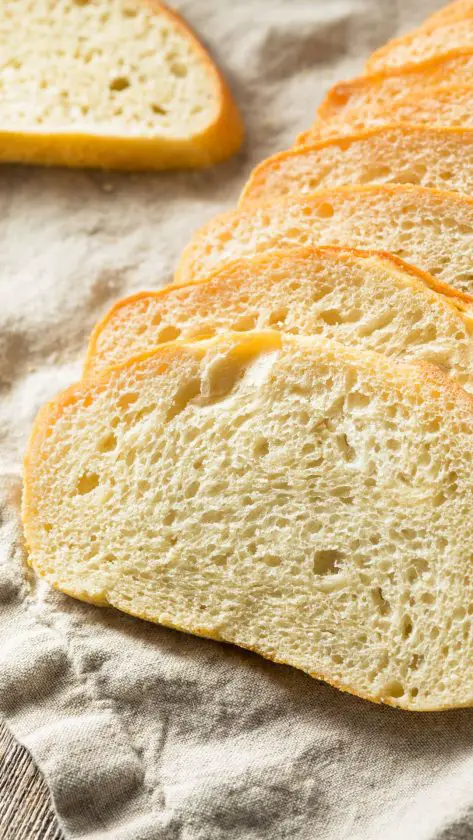
How to Make Sweet Sourdough Bread
Creating a delectable loaf of sweet sourdough bread is a rewarding experience. Let me guide you through the process.
Mixing the Dough
- In a large mixing bowl, combine the ingredients.
- Mix the ingredients until a shaggy dough forms. If the dough seems too dry, gradually add more water until it comes together.
- Cover the bowl with a damp towel or plastic wrap and let the dough rest for 30 minutes. This autolyze period allows the flour to hydrate fully and the gluten to begin developing.
Kneading and Folding
- After the autolyze, turn the dough out onto a lightly floured surface and knead it for 5-10 minutes until it becomes smooth and elastic. If you’re using a stand mixer, knead on medium speed for 5-7 minutes.
- Place the dough back in the bowl, cover it, and let it rest for 30 minutes.
- Over the next 2-3 hours, perform a series of stretch and folds every 30 minutes. To do this, grab a portion of the dough, stretch it upward, and fold it over itself. Rotate the bowl and repeat this process until you’ve worked your way around the entire dough. This helps to strengthen the gluten and incorporate air into the dough.
Bulk Fermentation
- After the final stretch and fold, cover the bowl tightly and let the dough ferment at room temperature for 4-8 hours, or until it has doubled in size. The fermentation time will depend on the strength of your starter and the ambient temperature.
- If you’re adding dried or fresh fruits, gently fold them into the dough after the first hour of bulk fermentation.
Shaping and Proofing
- Gently turn the dough out onto a lightly floured surface and shape it into a tight round or oval, depending on your preference.
- Place the shaped dough into a proofing basket or a bowl lined with a well-floured tea towel, seam-side up. Cover it with a damp towel or plastic wrap and let it proof for 1-2 hours, or until it has puffed up and looks airy.
- About 45 minutes before you plan to bake, preheat your oven to 450°F (230°C) with a Dutch oven or baking stone inside.
Baking and Cooling
- When the oven is preheated, carefully turn the dough out onto a piece of parchment paper or directly into the hot Dutch oven. Score the top of the loaf with a sharp blade to allow for expansion during baking.
- Bake the bread for 20 minutes with the lid on (if using a Dutch oven), then remove the lid and continue baking for an additional 20-25 minutes, or until the crust is deep golden brown and the internal temperature reaches 200°F (93°C).
- Remove the bread from the oven and transfer it to a wire rack to cool completely before slicing. This allows the crumb structure to set and prevents the bread from becoming gummy.
Common Problems + Troubleshooting
Don’t fret if something doesn’t go according to plan. There are things you can do to troubleshoot common issues you might face while trying to make your own sourdough:
Dough Not Rising Properly
Dough not rising as much as you’d like? Consider these tips:
- Make sure your starter is active and healthy. Feed it regularly and ensure it doubles in size within 4-8 hours after feeding.
- Ensure the dough is at the right temperature. Sourdough thrives in warm environments around 75-80°F (24-27°C). If your kitchen is cool, try proofing the dough in a slightly warmer spot, like near the oven or on top of the fridge.
- Give it more time. Sweet doughs can take longer to rise due to the added sugar, which can slow down yeast activity. Be patient and let the dough ferment until it has visibly increased in size and looks airy.
Dense or Gummy Texture
If your sweet sourdough turns out dense or gummy, try these solutions:
- Avoid adding too much fruit or sweetener. Excess moisture can weigh down the dough and lead to a dense crumb. Start with smaller amounts and gradually increase them as you become more comfortable with the recipe.
- Make sure the dough is properly fermented. Underfermented dough can result in a dense, heavy loaf. Allow enough time for the dough to double in size during bulk fermentation and look puffy and airy before baking.
- Bake the bread thoroughly. Dense or gummy texture can also be a sign of underbaking. Use a thermometer to ensure the internal temperature reaches at least 200°F (93°C) before removing the bread from the oven.
- Let the bread cool completely before slicing. Cutting into hot bread can cause the crumb to compress and appear gummy. Resist the temptation and allow the loaf to cool on a wire rack for at least an hour before enjoying it.
Customizing Your Sweet Sourdough
One of the joys of baking sweet sourdough bread is the endless possibilities for customization. This is one of those breads that you can let your creativity run wild by experimenting.
Here are some delectable variations to try:
Chocolate Chip Sourdough
- 100 g semisweet or dark chocolate chips
- 1 tsp vanilla extract
Fold in the chocolate chips during the last stretch and fold, and add the vanilla to the dough during mixing for a decadent twist on the classic loaf.
Cinnamon Raisin Sourdough
- 2 tsp ground cinnamon
- 150 g raisins
Sprinkle the cinnamon over the dough during the last stretch and fold, and incorporate the raisins during the first hour of bulk fermentation for a fragrant, fruity bread that’s perfect for toast or French toast.
Cranberry Orange Sourdough
- Zest of 1 orange
- 120 g dried cranberries
- 1 tbsp orange juice
Add the orange zest and juice to the dough during mixing, and fold in the cranberries during the first hour of bulk fermentation. The tangy-sweet combination is a crowd-pleaser, especially during the holidays.
Walnut Maple Sourdough
- 120 g toasted walnuts, chopped
- 50 g maple syrup (in place of the regular sweetener)
Replace the usual sweetener with maple syrup in the dough, fold in the toasted walnuts during the last stretch and fold for a loaf with warm, nutty undertones and a hint of maple goodness.
Pairing and Serving Ideas
Breakfast and Brunch Delights
- Spread a generous layer of your favorite jam, such as strawberry, raspberry, or apricot, on a warm slice of sweet sourdough for a simple yet satisfying breakfast.
- Create a decadent French toast by dipping thick slices of sweet sourdough in a mixture of eggs, milk, vanilla, and a pinch of cinnamon. Cook until golden brown and serve with a drizzle of maple syrup.
- Top a slice of toasted sweet sourdough with almond butter and sliced bananas for a protein-packed, energizing start to your day.
Afternoon Tea and Coffee Break
- Enjoy a slice of sweet sourdough alongside your afternoon cup of tea or coffee. The slight tang of the bread perfectly complements the bitterness of these beverages.
- Spread a layer of soft, tangy cheese like Chèvre or brie on a slice of sweet sourdough and top with a drizzle of honey for a sophisticated snack.
- Create mini open-faced sandwiches by topping small squares of sweet sourdough with thin slices of cucumber, smoked salmon, and a dollop of crème fraîche.
Dessert and After-Dinner Indulgence
- Transform your sweet sourdough into a simple dessert by toasting a slice and topping it with a scoop of vanilla ice cream and a drizzle of salted caramel sauce.
- Cut your sweet sourdough into bite-sized cubes, toast them until crispy, and serve them as croutons atop a fruit salad for added texture and a hint of sweetness.
- Grill slices of sweet sourdough and serve them alongside a platter of fresh fruits, dark chocolate squares, and a variety of soft and hard cheeses for a rustic, yet elegant dessert board.
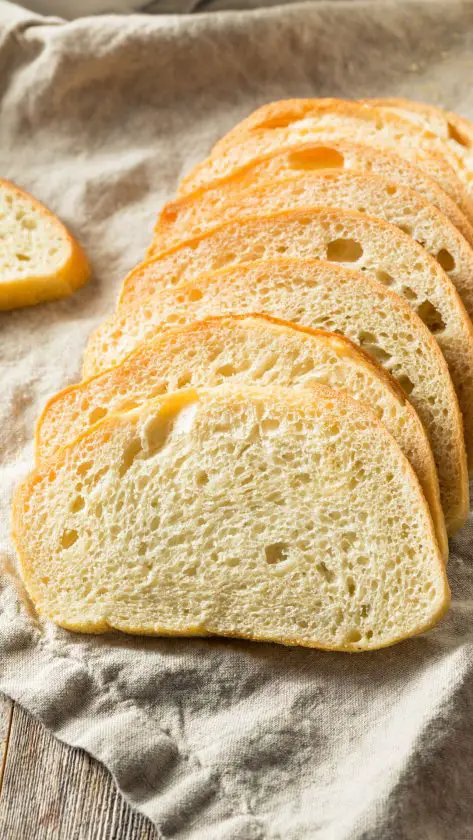
Sourdough Sweetness!
Crafting the perfect sweet sourdough loaf is a journey that combines science and art. You can create a uniquely delicious bread. Embrace the process, experiment with variations, and trust in the power of fermentation to create your masterpiece.
Let me know what your favorite variation or mix-in is for your own loaf!
Sweet Sourdough Bread: FAQs
Can I add sugar to sourdough bread?
Yes, you can add sugar to sourdough bread. However, traditional sourdough recipes often omit sugar to allow the natural flavors of the fermented dough to shine through. Adding sugar will slightly sweeten the bread and can also help with browning the crust. The amount of sugar you add is a matter of personal preference.
Does sourdough bread taste sweet?
Sourdough bread has a mildly tangy, complex flavor profile due to the fermentation process involving wild yeast and bacteria. While it doesn’t taste overtly sweet like some other bread varieties, the natural fermentation can produce subtle sweet notes alongside the characteristic sourness. The sweetness is generally understated, and the tanginess tends to be the predominant flavor in sourdough bread.
Is sourdough bread high in sugar?
Traditionally made sourdough bread is relatively low in sugar compared to many other types of bread. The fermentation process consumes most of the naturally occurring sugars in the dough, resulting in a lower sugar content in the final product. However, some commercially produced sourdough breads may have added sugars, so it’s essential to check the ingredient list if you are concerned about sugar intake.
Is sourdough bread healthier than regular bread?
Sourdough bread can be considered healthier than regular bread in several ways. The fermentation process improves the bread’s digestibility, as the bacteria and yeast break down some of the gluten and other complex compounds. Sourdough may also have a lower glycemic index, meaning it doesn’t cause rapid spikes in blood sugar. Additionally, the fermentation process can increase the bioavailability of certain nutrients.
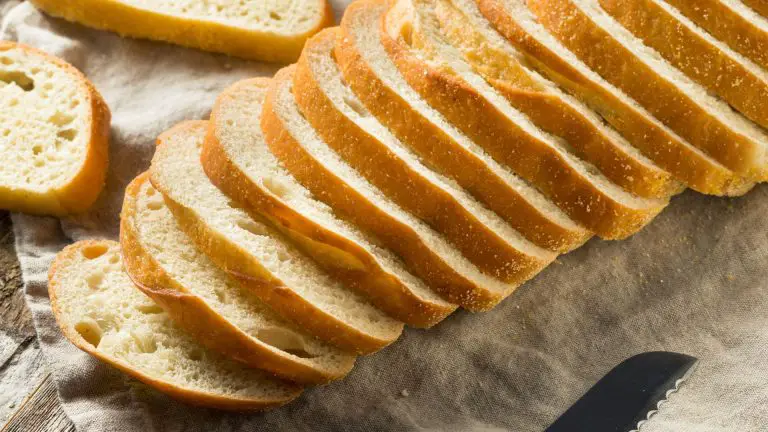
Sweet Sourdough Bread
Creating a delectable loaf of sweet sourdough bread is a rewarding experience. You can experiment with your own sweeteners and fruits!
- Total Time: 7.5 hrs
- Yield: 1 loaf 1x
Ingredients
- 500 grams of bread flour
- 50 grams of whole wheat flour
- 150 grams active sourdough starter
- 300–350 grams of water (adjust based on flour absorption)
- 10 grams salt
- 30–50 grams honey
Instructions
- Mix the ingredients until a shaggy dough forms. If the dough seems too dry, gradually add more water until it comes together.
- Cover the bowl with a damp towel or plastic wrap and let the dough rest for 30 minutes.
- After the autolyze, turn the dough out onto a lightly floured surface and knead it for 5-10 minutes until it becomes smooth and elastic. If you’re using a stand mixer, knead on medium speed for 5-7 minutes.
- Place the dough back in the bowl, cover it, and let it rest for 30 minutes.
- Over the next 2-3 hours, perform a series of stretch and folds every 30 minutes.
- After the final stretch and fold, cover the bowl tightly and let the dough ferment at room temperature for 4-8 hours, or until it has doubled in size.
- If you’re adding dried or fresh fruits, gently fold them into the dough after the first hour of bulk fermentation.
- Gently turn the dough out onto a lightly floured surface and shape it into a tight round or oval, depending on your preference.
- Place the shaped dough into a proofing basket or a bowl lined with a well-floured tea towel, seam-side up. Cover it with a damp towel or plastic wrap and let it proof for 1-2 hours, or until it has puffed up and looks airy.
- About 45 minutes before you plan to bake, preheat your oven to 450°F (230°C) with a Dutch oven or baking stone inside.
- When the oven is preheated, carefully turn the dough out onto a piece of parchment paper or directly into the hot Dutch oven. Score the top of the loaf with a sharp blade to allow for expansion during baking.
- Bake the bread for 20 minutes with the lid on (if using a Dutch oven), then remove the lid and continue baking for an additional 20-25 minutes, or until the crust is deep golden brown and the internal temperature reaches 200°F (93°C).
- Remove the bread from the oven and transfer it to a wire rack to cool completely before slicing.
Notes
- The amount of water needed may vary depending on the type of flour you use and the humidity in your environment. Start with the lower end of the range and add more water as needed to achieve a soft, tacky dough.
- If you choose to include fresh or dried fruits, you may need to slightly reduce the amount of water in the recipe to account for the moisture they’ll add to the dough.
- Prep Time: 6 hrs
- Cook Time: 1.5 hrs
- Category: bread
Nutrition
- Serving Size: 1 slice
- Calories: 169 kcal
- Fat: 0.5 g
- Carbohydrates: 36 g
- Protein: 5 g

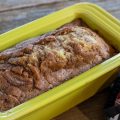
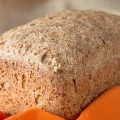
![Soft Sourdough Bread [Easy Recipe + Tips] 111 Soft sourdough bread [easy recipe]](https://www.mydailysourdoughbread.com/wp-content/uploads/2024/02/Soft-Sourdough-Bread-120x120.jpg)

![How To Make Bazlama [Turkish Flat Bread Recipe] 113 How to make bazlama [turkish flat bread recipe]](https://www.mydailysourdoughbread.com/wp-content/uploads/2024/03/Bazlama-4-120x120.jpg)